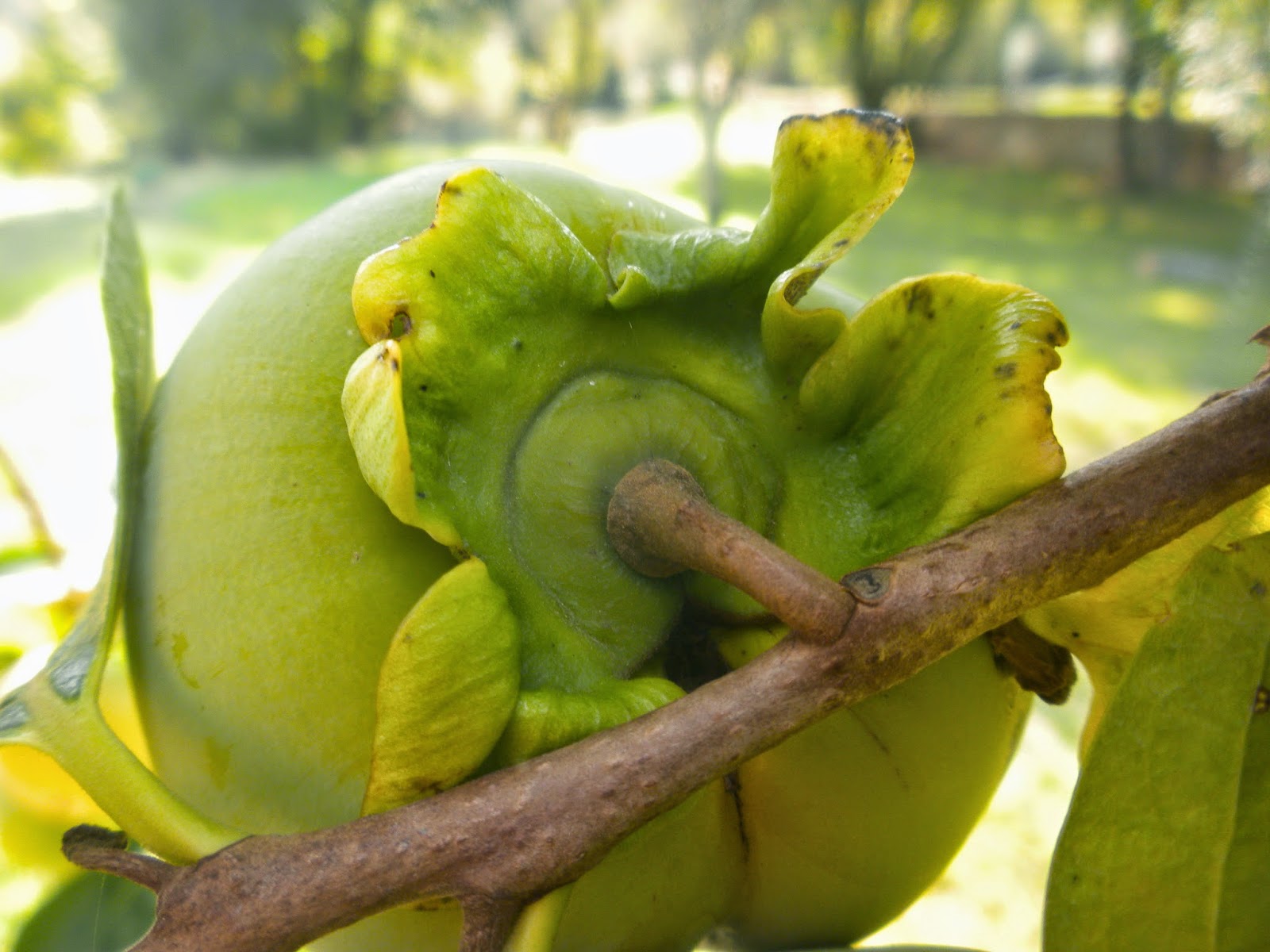Ripeness is All
Of the genus diospyros, family Ebenaceae - which is the family of the ebony tree - the most widely consumed is the Asian persimmon Diospyros kaki. Diospyros comes from Greek, meaning divine fruit or literally, 'wheat of Zeus' otherwise translated as 'Jove's fire' or 'God's pear'. In modern Greek it is called lotos and associated with the food of the lotus-eaters in the Odyssey, although there are multiple candidates for this honour. Interestingly, it has several names in Italian: loto in the south, diosporo in central Italy, cachi or kaki in the north.
The pretty word 'persimmon' comes from Native American Algonquian pessamin, strangely meaning dry fruit. I wonder if this refers to the persimmon's astringency when under-ripe, which leaves the mouth chalky-dry, thanks to the fruit's high levels of tannins. To custom-ripen or 'blet' in the home, store the persimmons in a pot with some apples, pears or bananas which exude the ethylene needed for ripening. Alternatively, persimmons can be ripened through freezing.

When a persimmon is ripe it is deep amber-orange, translucent, soft to the touch and almost oozing out of its skin and the calyx can be pulled out easily. The flesh is jelly-like and sweet with some firmer segments.
An interesting if slightly revolting fact about persimmons is that if too many unripe fruits are eaten, a sticky food-ball can form in the stomach which occasionally needs to be removed surgically. It appears that Coca Cola can also eliminate or reduce these food-balls. Which adds further support to my lifelong campaign against drinking the stuff for recreational purposes. However it is actually wise not to consume on an empty stomach (persimmons, but possibly also the drink).
If properly ripened, the persimmon is delicious eaten like a pudding in its own bowl, removing the calyx and scooping out the flesh with a teaspoon. In the east persimmons are also peeled, squashed and dried to be eaten as snacks or used in cooking. In the United States persimmons are cooked in pies, puddings, cakes, amongst others.*
The persimmon is a tardy tree late to leaf, late to flower while the fruit hangs on the bare branches into winter, a magical sight. Our persimmons are still on the tree at Le Ripe where I shall leave them until they ripen, largely for aesthetic reasons.
 In the 13th century during the Song dynasty, a Chinese monk, Mu Ch'i Fa-Ch'ang, immortalized six persimmons in black ink on paper. The work of art, famous for the mastery of its brushstrokes, is considered one of the greatest examples of the 'spontaneous mode' of painting. The six persimmons have been likened to the ages of man, symbolizing the progression from immaturity to ripeness and sweetness.
In the 13th century during the Song dynasty, a Chinese monk, Mu Ch'i Fa-Ch'ang, immortalized six persimmons in black ink on paper. The work of art, famous for the mastery of its brushstrokes, is considered one of the greatest examples of the 'spontaneous mode' of painting. The six persimmons have been likened to the ages of man, symbolizing the progression from immaturity to ripeness and sweetness. * A friend tells me that plain, blended persimmon can be frozen and stored until needed as a sauce for ice-cream: a sure-fire success.









No comments:
Post a Comment
Comments are welcome but will be checked before publishing.